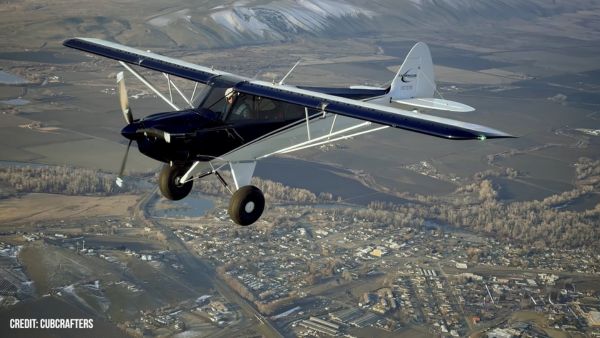Aero-Tips!
A good pilot is always learning -- how many times have you heard
this old standard throughout your flying career? There is no truer
statement in all of flying (well, with the possible exception of
"there are no old, bold pilots.")

Aero-News has called upon the expertise of Thomas P. Turner,
master CFI and all-around-good-guy, to bring our readers -- and us
-- daily tips to improve our skills as aviators. Some of them, you
may have heard before... but for each of us, there will also be
something we might never have considered before, or something that
didn't "stick" the way it should have the first time we memorized
it for the practical test.
Look for our daily Aero-Tips segments, coming each day to you
through the Aero-News Network.
Aero-Tips 10.22.06
We've been reviewing the FAA's Top 10 list of pilot-error
accident causes. Next up: "misjudgment of distance and speed".
What the Feds are really getting at here are two types of
accident:
- Runway undershoot, resulting in landing short of the runway
and/or stalling on approach.
- Landing long, and going off the far end of the runway.
Coming up short
Landing short of the runway is usually the result of flying at
too low an airspeed on final approach. As angle of attack increases
it takes more and more power to maintain a given glide path. If the
pilot does not add power or adjust pitch (to reduce angle of
attack) the "sink rate", or rate of descent, may become excessive,
and the angle of descent take the airplane to a point short of the
prepared surface. If the pilot is lucky the plane will roll onto
the runway without damage. If not...
Of course if angle of attack gets completely out of hand the
airplane may stall, potentially impacting the ground at a higher
rate of descent and out of control, with even more dire
consequences.
It's counterintuitive to push the nose down if the ground is
coming up too fast. It's also considered bad form to have to add
power on final approach, despite the real need when the glidepath
is too steep. Making sense of the relationship between power and
pitch, and angle and rate of descent, is one of the main reasons we
have to practice landings so much before the first solo flight, and
why pattern practice is a staple of flight reviews throughout a
pilot's entire flying lifetime.
Landing long
Although (as the adage goes) it's better to go off the far end
of the runway at, say, 20 knots than to hit the approach end at a
much higher speed, running off the end of the runway is another
common cause of mishaps. This usually results from too fast a speed
on final approach. As a rough rule, for ever extra five knots of
airspeed on short final a typical light piston airplane will
increase its landing distance by about 10%. Come in 10 knots fast
and you'll use up about 20% more runway, all else being equal.
If you misjudge your angle of descent and land farther down the
runway than expected you're also more likely to run off the far
end. Combine "hot" (too much airspeed) and "high" (too shallow a
descent) and you may find yourself on the evening news as they
hoist your airplane out of somebody's parking lot.
What's the answer to both scenarios? Good airspeed control. This
comes from using a target power setting and pitch attitude. You may
have to adjust these for any given landing, but you can't tell what
adjustments to make unless you have a "standard" approach (and its
resulting performance) in mind to start.
Aero-tip of the day: Practice precise airspeed
control on final approach to make more accurate landings.
 ANN's Daily Aero-Linx (04.15.24)
ANN's Daily Aero-Linx (04.15.24) Classic Aero-TV: 'No Other Options' -- The Israeli Air Force's Danny Shapira
Classic Aero-TV: 'No Other Options' -- The Israeli Air Force's Danny Shapira Aero-News: Quote of the Day (04.15.24)
Aero-News: Quote of the Day (04.15.24) Airborne 04.16.24: RV Update, Affordable Flying Expo, Diamond Lil
Airborne 04.16.24: RV Update, Affordable Flying Expo, Diamond Lil ANN's Daily Aero-Term (04.16.24): Chart Supplement US
ANN's Daily Aero-Term (04.16.24): Chart Supplement US



